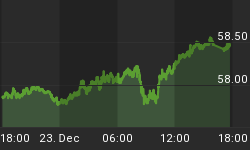As we have noted, in the credit markets, the term "Disorderly" is a euphemism for "Crash". And this is the condition afflicting most classes of bonds.
The key event has been the reversal from a speculative surge to a downtrend. This was expected in or around May.
Using the High-Yield Corporate Bond (HYG), the price soared to 95.80 on May 7th, which was followed by a dramatic Outside Reversal day. We reviewed this with Bond Markets - A Profound Change? on May 13th.
The main point was that the hot action was vulnerable to a seasonal reversal centered in May, and that market forces would overwhelm bond-buying programs by the ECB, BoJ and Fed. Mother Nature and Mister Market would preempt the "official" decision by senior central banks to end the program.
The test of the high reached 95.39 on May 22nd, and the breakdown was accomplished on May 23rd. Technically, the trend reversed to down in price and up in yield. The possibility of widening credit spreads has yet to work out. Treasury bond prices have fallen with lower-grade bond prices.
At some point spreads between treasuries and corporates will turn to serious widening.
The other part of the Great Bond Revulsion will be a serious increase in interest rates relative to the rate of CPI inflation. Rising real interest rates is one of the features of the post-bubble condition and will be reviewed in the next week or so.
The last disorderly market brewed up last summer and was mainly focused upon European Sovereign Debt. Using the Spanish Ten-Year as the proxy, the reversal from party-time was accomplished in early April 2012 when the yield rose above 5.50%.
The high in the panic was 7.50% set on July 24th.
The yield plunged to 4.0% on May 3rd, and the breakout at 4.43% was accomplished last week.
Now it's at 5.16% and rising quickly.
However, in looking at the leading disasters such as HYG and Emerging Debt (EMB) the plunge has been severe. Severe enough to drive the Weekly RSI on the HYG to 33, which is the lowest since the 2008 Crash.
On the EMB the RSI is down to 18. While not as low as with the 2008 Crash, it is extremely oversold.
The action in US corporates has been very bad but "Emerging" has been worse. The yield ratio between EMB/HYG soared to 1.36 last November and then HYG began to outperform.
The yield ratio declined to 1.24 in March and rallied to 1.29 in April. From 1.26 last week it has crashed to 1.14 earlier today. With this the Weekly RSI has plunged to 15 - the worst on a chart back to 2008.
Over the past week the calamity drove the DX from 80.5 to 82.8 earlier today.
Wrap
-
Lower-grade bond markets are extremely oversold and can enjoy a brief rally. There could be even greater liquidity problems in the fall.
-
With this, the US dollar can decline.
-
A technical rebound for the precious metals is possible.
-
For this to work out, gold stocks would begin to outperform gold and silver would begin to rise relative to gold.















